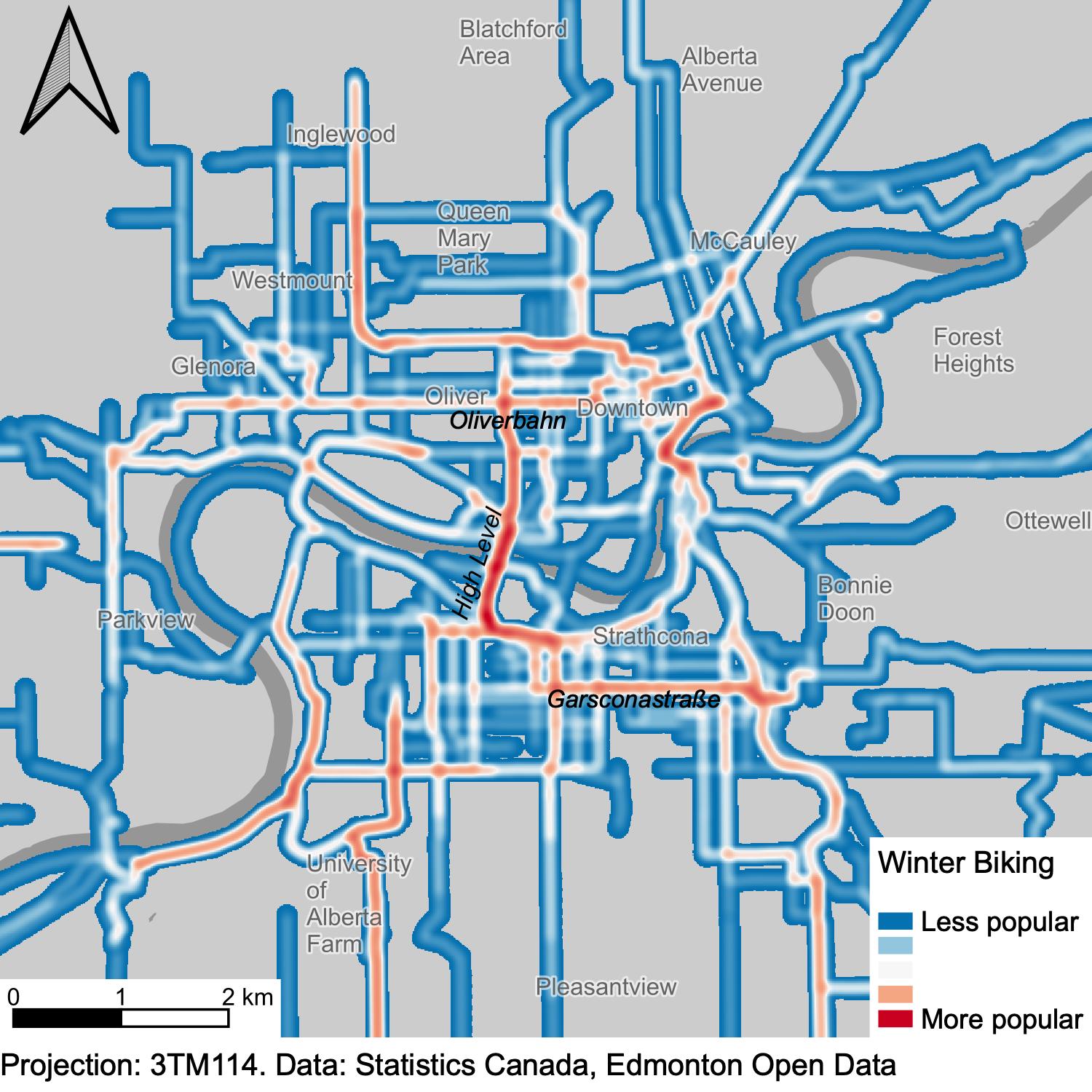City of Edmonton Winter Biking Map
By: Darcy Reynard, Centre for Healthy Communities, Graduate Research Assistant - GIS Analyst
March 5, 2020

This winter biking map of Edmonton shows where cyclists have submitted road and trail condition edits on the web map www.winterbiking.ca. Using this web link, cyclists can report the conditions of recent places they have ridden their bikes during the winter. In the above map, popular cycling areas that have received more user-submitted edits are coloured red and less popular are in blue.
Overall, it appears that the High Level Bridge (HLB) and the separated bike lanes (locally known as the Oliverbahn along 102 Avenue and the Garsconastraße along 83 Avenue) are among the most popular areas to ride in the winter. A possible explanation for the popularity of the HLB is that it allows cyclists to cross the North Saskatchewan river without climbing out of the river valley. The separated bike lanes are likely so popular as the Oliverbahn and the Garsconastraße are designed specifically for safe and calm biking, with a physical barrier separating cyclists from motor vehicles. This supportive built environment infrastructure provides a calm corridor connecting inner-city residential neighbourhoods to major work locations, such as Downtown and the University of Alberta.
This type of map is known as a Public Participatory Geographic Information Systems (PPGIS) map. Researchers can use data collected from this PPGIS map as a starting point for future research, such as looking at where cyclist are most active during the winter to analyze why winter biking “works” in those areas. Using data from the PPGIS map on the condition of the cycling routes and additional comments, researchers could also develop qualitative research questions to reveal deeper insights about winter biking conditions and the experiences of people who bike.
From a public health perspective, this PPGIS map shows us how our environment supports people’s activity and interaction with their city environment. We can see that people are riding their bikes in the winter and where they are riding in Edmonton. With the right equipment and appropriately maintained infrastructure, biking in the winter could be very appealing to many Edmontonians who already partake in sledding, skating, and skiing. Stories from cyclists about the value of properly maintaining biking infrastructure in the winter reveal that very little extra equipment is required to encourage a person who already bikes in three seasons to bike all year. For stories and advice on biking in the winter, see the Twitter feeds of Glenn Kubish (@Kub64) or Tom Babin (@TomBabin; also the author of Frostbike).
Winter does not mean the end of bike season, so get out and enjoy our wonderful city! The City of Edmonton has some great winter biking resources available.
Darcy Reynard works with the CHC as a GIS Analyst, helping add a spatial component to the research. He is also completing a PhD in Human Geography and Planning at the U of A, researching the effect of carbon pricing on mobility and social exclusion. He is an avid cyclist and advocate for sustainable transportation.